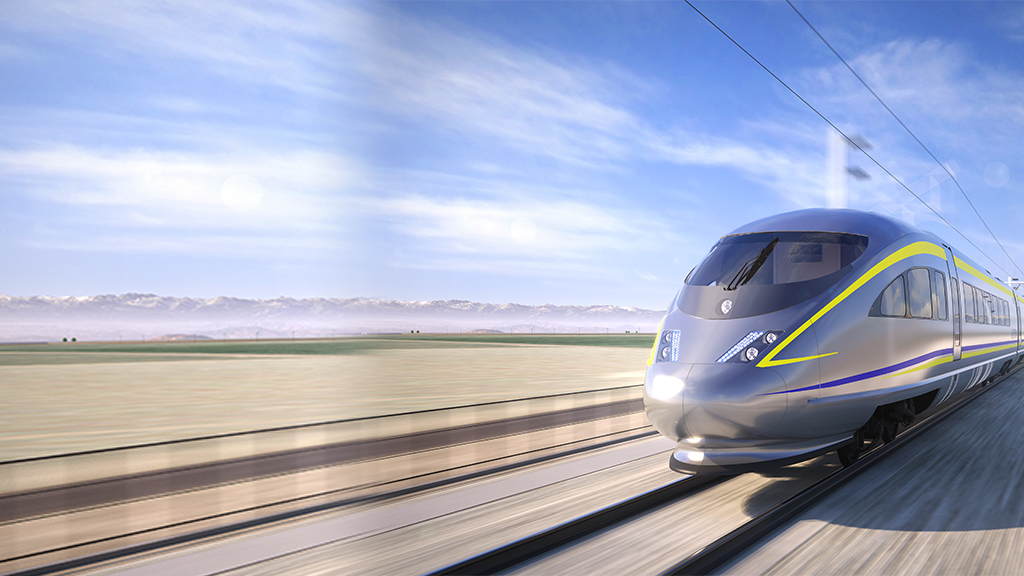Newsletter Sign Up
Stay updated on news, articles and information for the rail industry
Stay updated on news, articles and information for the rail industry
RAIL EMPLOYMENT & NOTICES
Rail News Home
Rail Industry Trends
Rail News: Rail Industry Trends
3/21/2002
Rail News: Rail Industry Trends
NASA to launch zero-gravity railroad in April
advertisement
Although there aren't any shippers there — at least as far as anyone knows — National Aeronautics and Space Administration plans next month to begin building the first railroad in space.
When Space Shuttle Atlantis takes off in April, it'll carry a 1,950-pound part flat car, part locomotive Mobile Transporter and an initial 43-foot track section to the 16-nation International Space Station — the beginning of the first zero-gravity rail line.
The line would encircle the station's structural backbone, enabling a robotic arm to carry and install future truss segments and solar arrays along the tracks.
NASA plans next month to launch the aluminum Mobile Transporter, which would inch up and down the 43-foot track section after spacewalkers loosen launch restraints, and attach electrical and computer-cable reels.
Moving at a top speed of 300 feet per hour, the three-foot high, nine-foot long and eight-foot wide machine will be driven by dual electric motors that generate only a hundreth of one horsepower but still enable the transporter to move 23 tons of cargo.
The zero-gravity machine uses three wheel sets: one to propel it and two to ensure the transporter doesn't float loose.
Although the transporter will act as NASA's freight train, the agency plans by year-end to add to the line two special hand cars to transport space-walking astronauts. Called Crew and Equipment Translation Aid, the cars would enable astronauts to move themselves and gear by hand from place to place.
NASA plans to add eight more track sections to the line over the next two years, completing more than 130 feet of track this year and more than 360 feet by project's end.
When Space Shuttle Atlantis takes off in April, it'll carry a 1,950-pound part flat car, part locomotive Mobile Transporter and an initial 43-foot track section to the 16-nation International Space Station — the beginning of the first zero-gravity rail line.
The line would encircle the station's structural backbone, enabling a robotic arm to carry and install future truss segments and solar arrays along the tracks.
NASA plans next month to launch the aluminum Mobile Transporter, which would inch up and down the 43-foot track section after spacewalkers loosen launch restraints, and attach electrical and computer-cable reels.
Moving at a top speed of 300 feet per hour, the three-foot high, nine-foot long and eight-foot wide machine will be driven by dual electric motors that generate only a hundreth of one horsepower but still enable the transporter to move 23 tons of cargo.
The zero-gravity machine uses three wheel sets: one to propel it and two to ensure the transporter doesn't float loose.
Although the transporter will act as NASA's freight train, the agency plans by year-end to add to the line two special hand cars to transport space-walking astronauts. Called Crew and Equipment Translation Aid, the cars would enable astronauts to move themselves and gear by hand from place to place.
NASA plans to add eight more track sections to the line over the next two years, completing more than 130 feet of track this year and more than 360 feet by project's end.


 2025 MOW Spending Report: Passenger-rail programs
2025 MOW Spending Report: Passenger-rail programs
 Gardner steps down as Amtrak CEO
Gardner steps down as Amtrak CEO
 Guest comment: Oliver Wyman’s David Hunt
Guest comment: Oliver Wyman’s David Hunt
 Women of Influence in Rail eBook
Women of Influence in Rail eBook
 railPrime
railPrime








